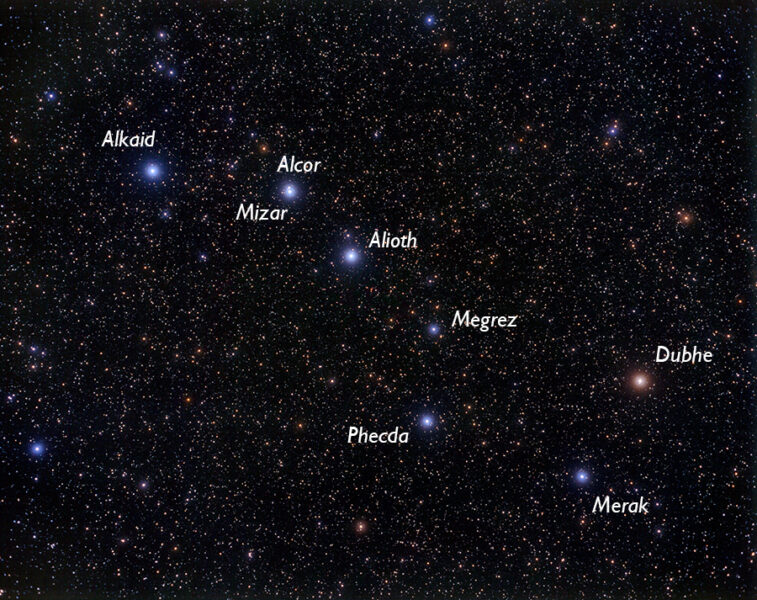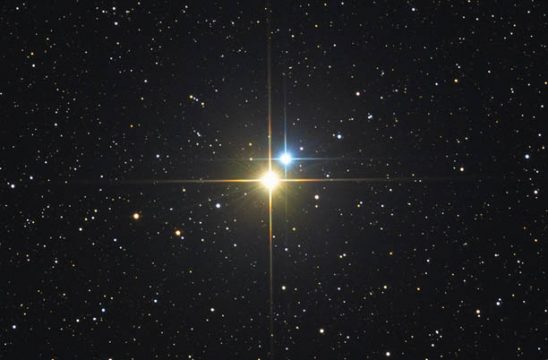
Akira Fujii
One of the joys of stargazing is the chance to daydream about what it’s like "out there." Double stars, in particular, excite my curiosity. These twin-sun systems are fascinating to search out and observe. As I study them, I often imagine what it would be like to live and work on the surface of a planet in a double-star system.
Imagine a hypothetical world circling Antares B. This is a white star that orbits the red supergiant we call Antares — the bright star at the heart of the summer constellation Scorpius. The sunrise would be fantastic! In a sky already lit by a sun a hundred times larger than our own, the rising of a second brilliant, blue-white sun would be beautiful. Sometimes one sun would be rising while the other was setting, producing some glorious lighting conditions.
The fantastic mental images inspired by double stars compare to their intrinsic beauty through the eyepiece. They show us combinations of color we seldom see anywhere else. I’ve seen the Antares system as a brilliant yellowish burgundy fireball with a tiny green dot on its edge. How exotic!
It’s not too difficult to view double stars for yourself. You do need the magnification provided by a telescope or very good binoculars to reveal both stars in a pair. There are dozens of double stars as breathtaking as Antares that even the smallest telescope will split. Such an instrument will show that many of the brighter naked-eye stars are in fact doubles.
Some Pretty Double Stars

Stefan Binnewies, Josef Pöpsel / Capella Observatory
Three lovely pairs visible in late summer and early autumn skies (for Northern Hemisphere observers) are Albireo, in the constellation Cygnus, Delta (d) Cephei in Cepheus, and Gamma (g) Andromedae in Andromeda. Each pair contains a lemon or tangerine sun with a little sapphire partner.
Winter’s arrival brings two more fine doubles: Gamma (g) Arietis (the third-brightest star in Aries) and Kappa (k) Puppis (just southeast of Sirius in Canis Major). These are equal-brightness pairs that look like eyes glowing in the darkness.
Spring and summer nights present us with Alcor and Mizar — the most easily found pair in the sky. They mark the middle of the Big Dipper’s handle. Bright Mizar is really a pair of brilliant blue-white stars that appear split only by a hair.
These are just a few of hundreds of stellar couples that you can spot with a telescope or binoculars. Only a tiny percentage of the human race has seen any of them. If you join the ranks of those who have, I know you won’t be disappointed in the view both through your eyepiece and in your imagination.
 0
0
Comments
You must be logged in to post a comment.